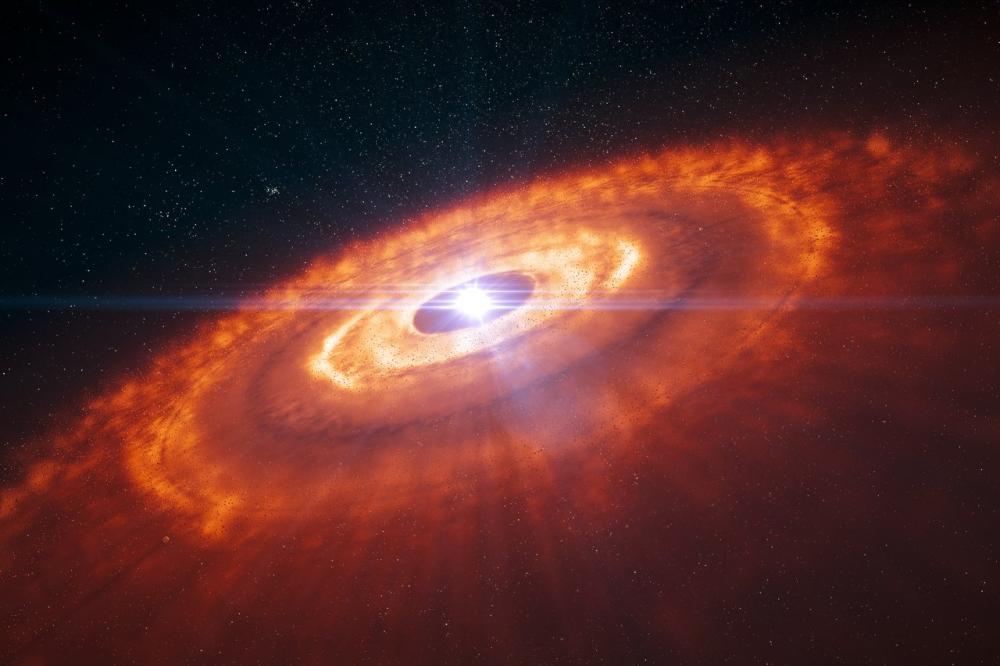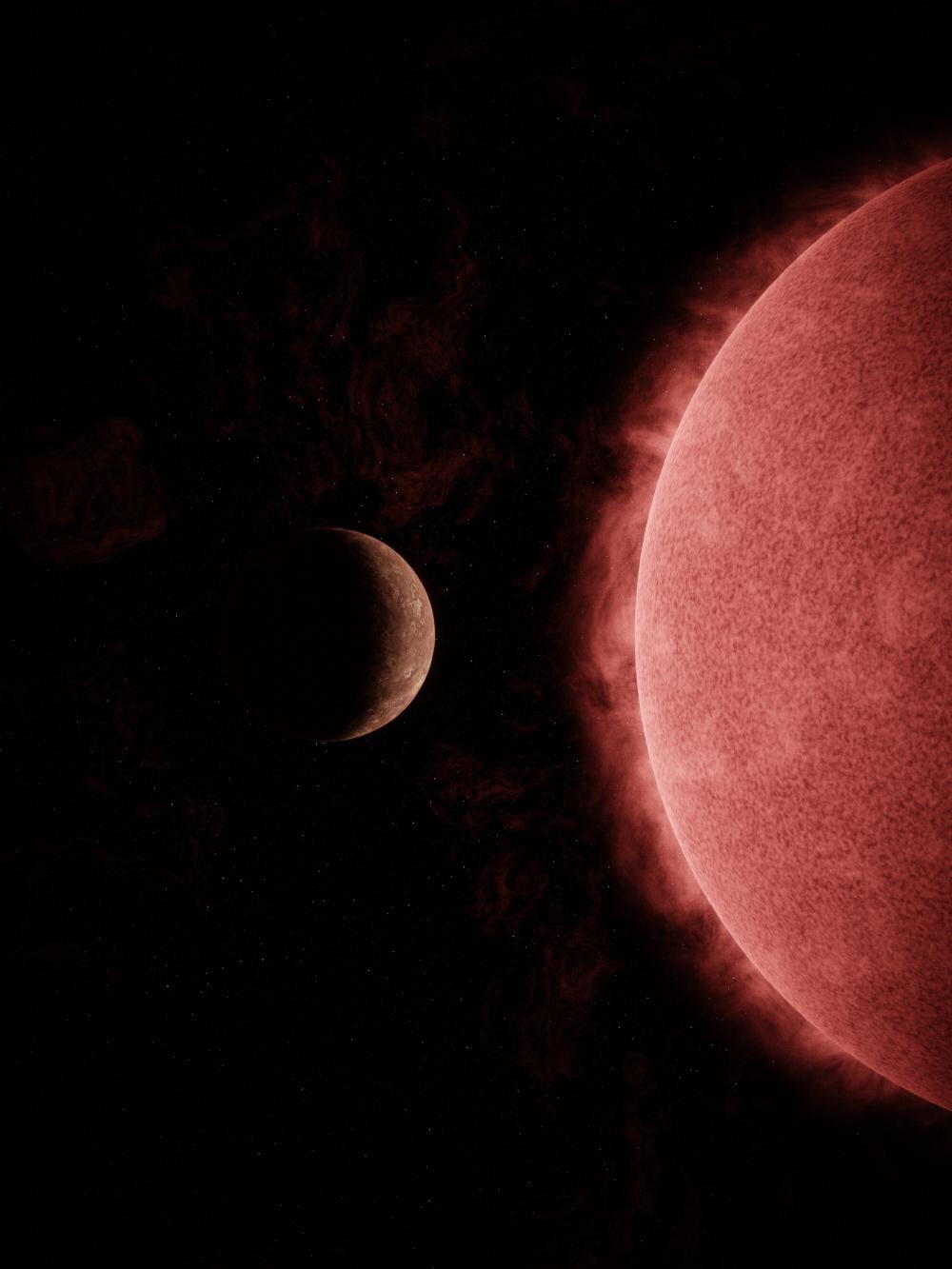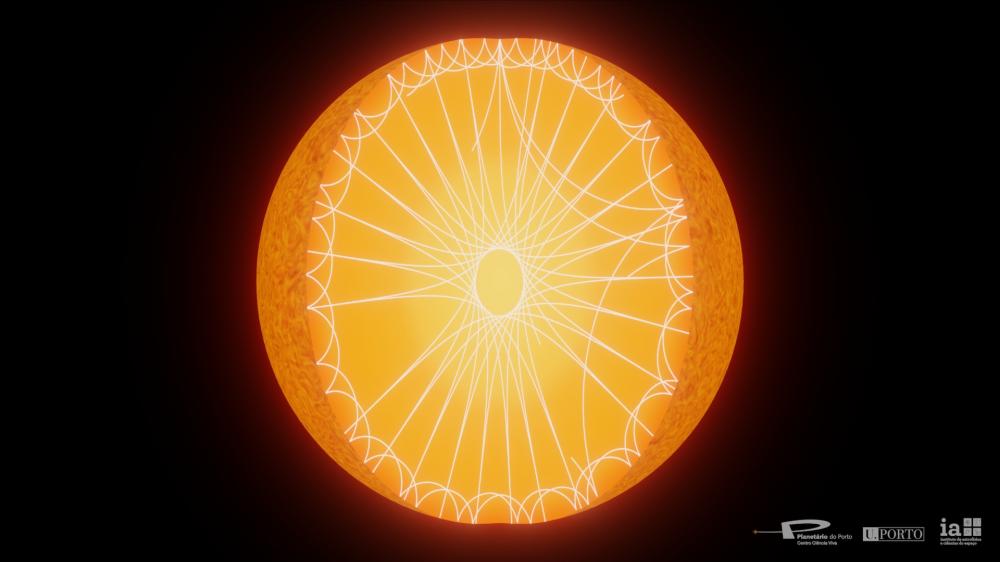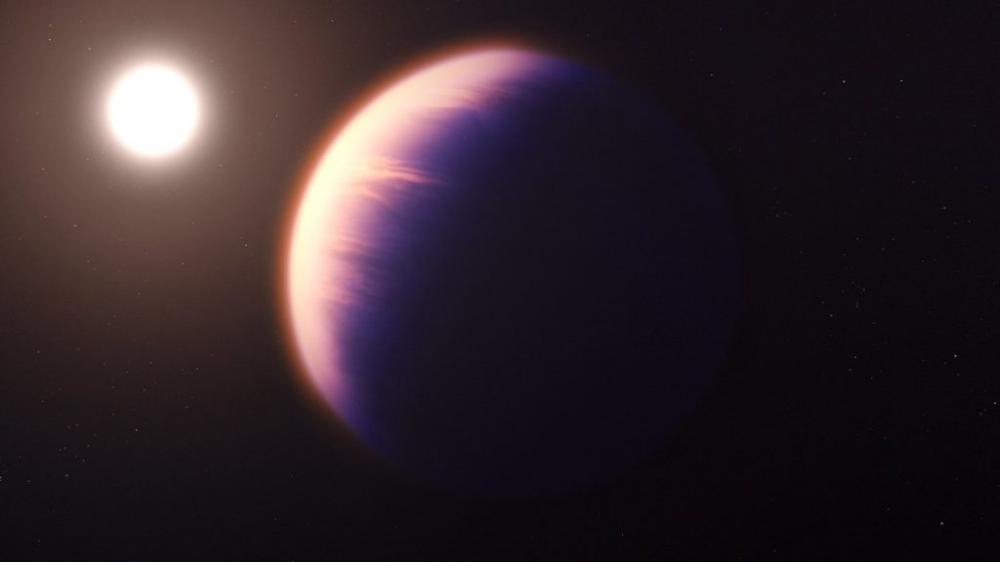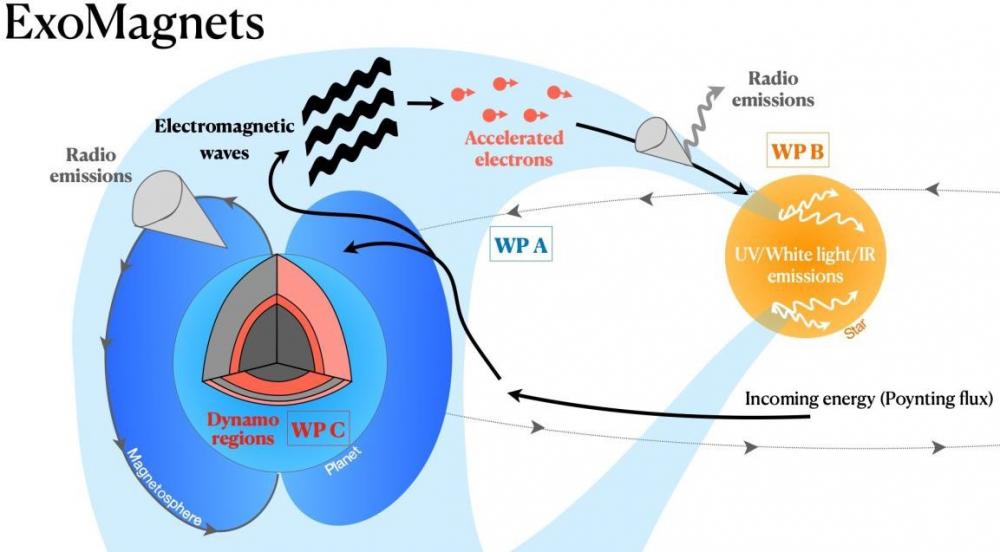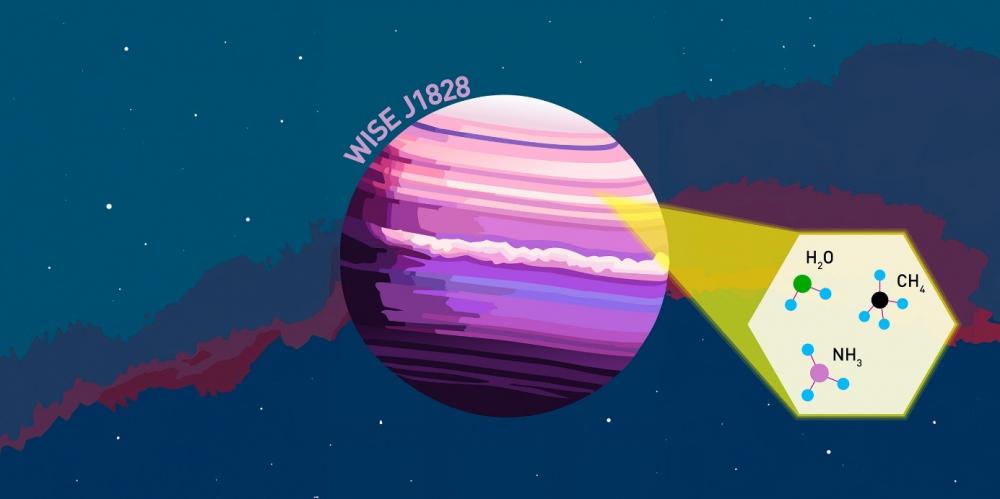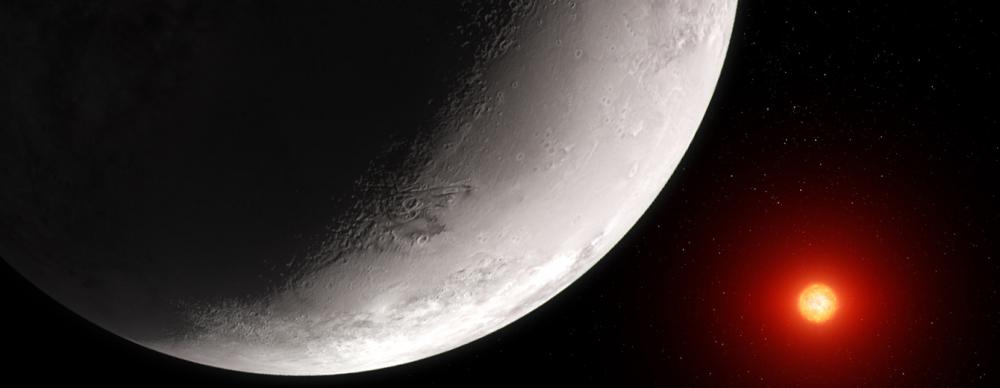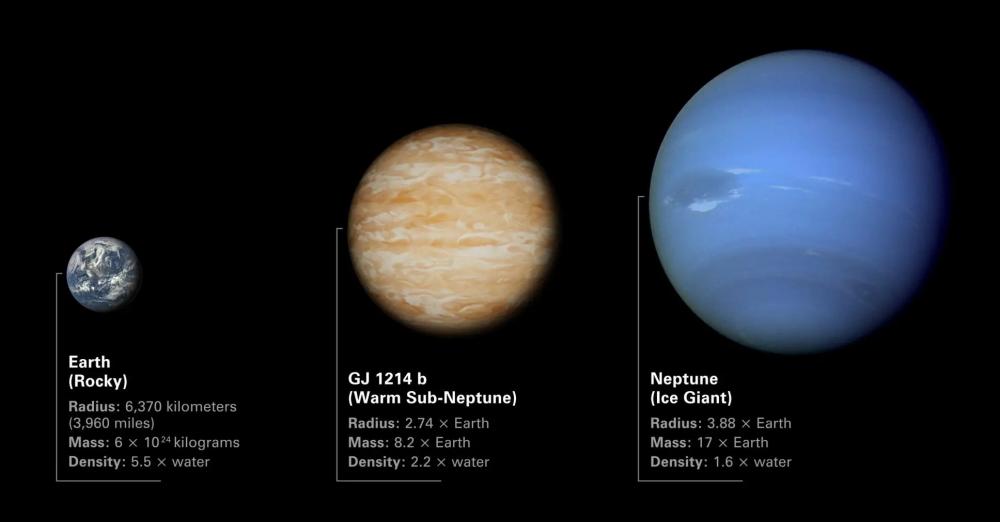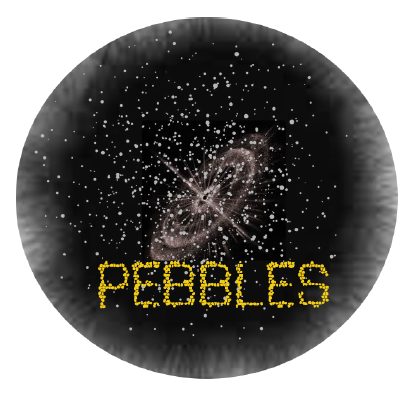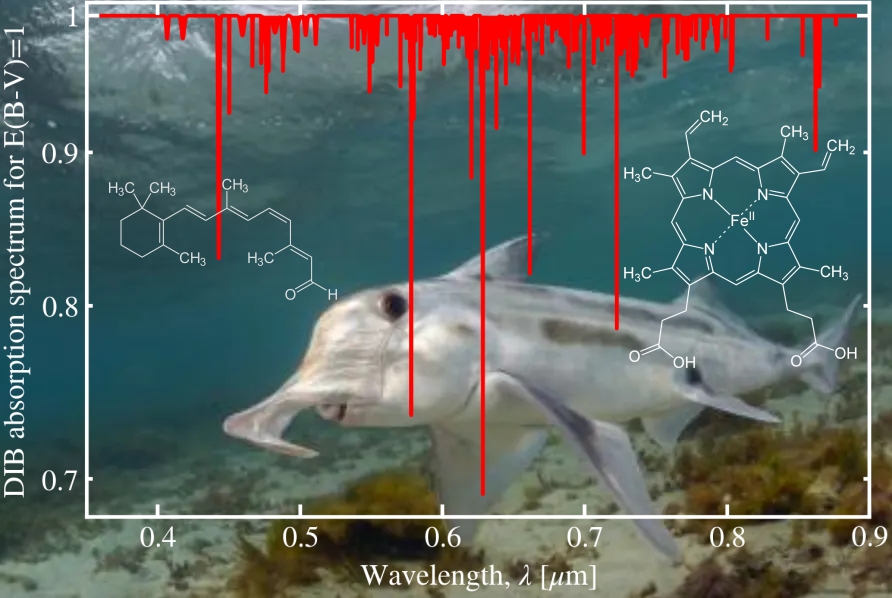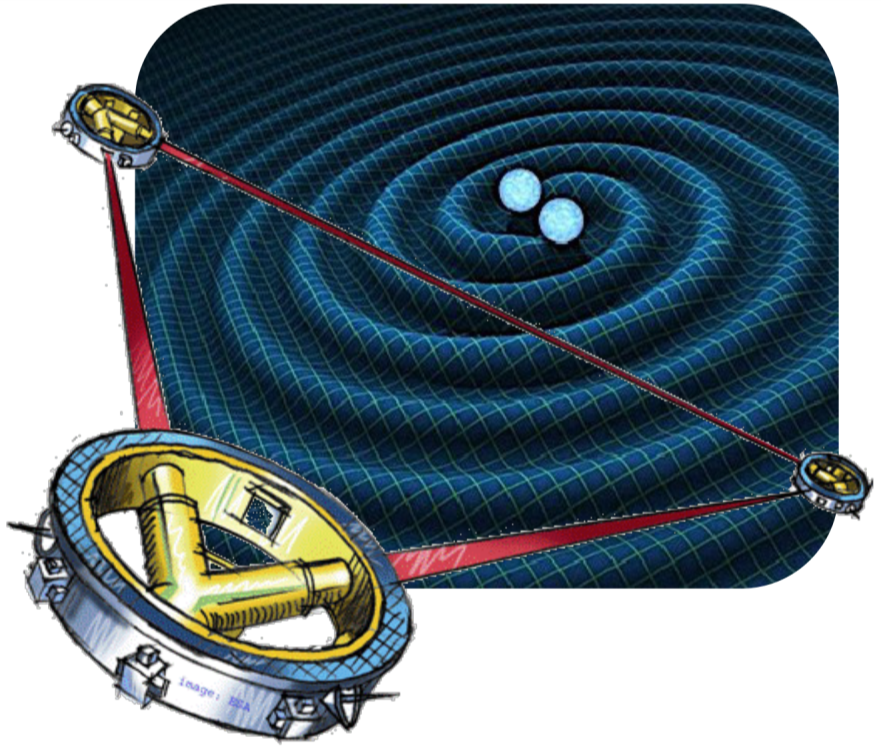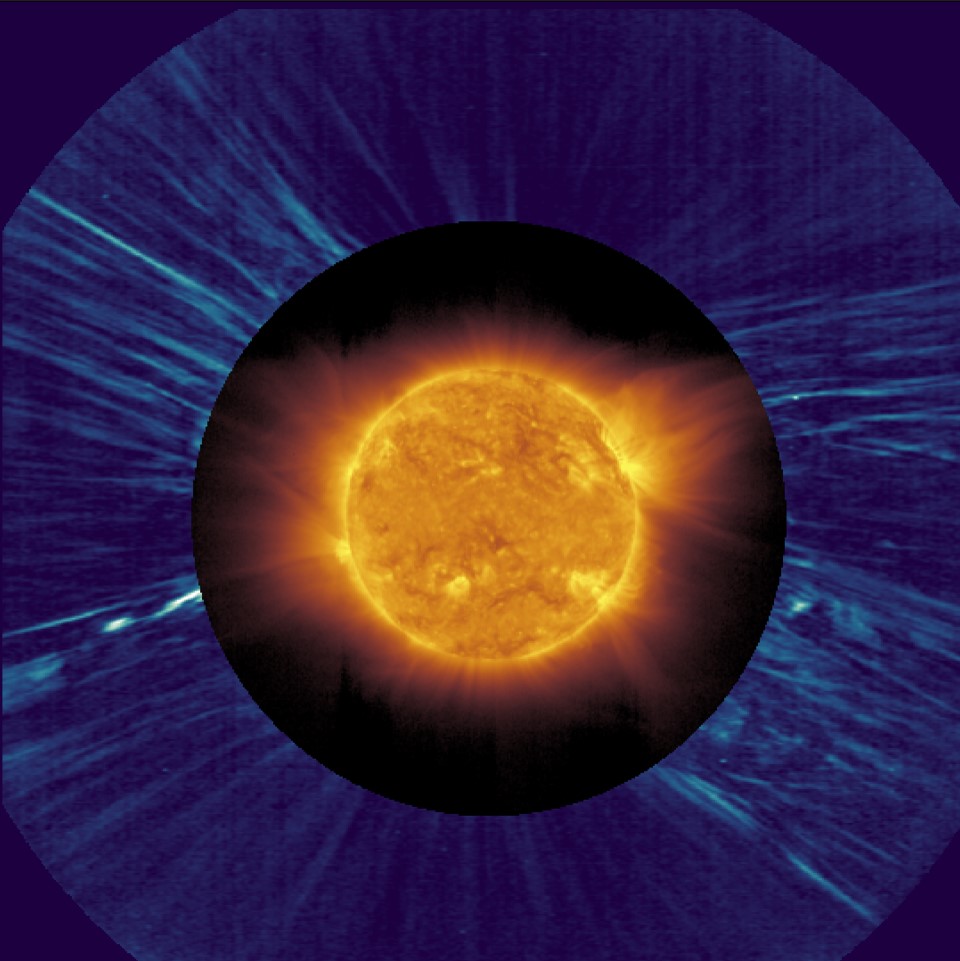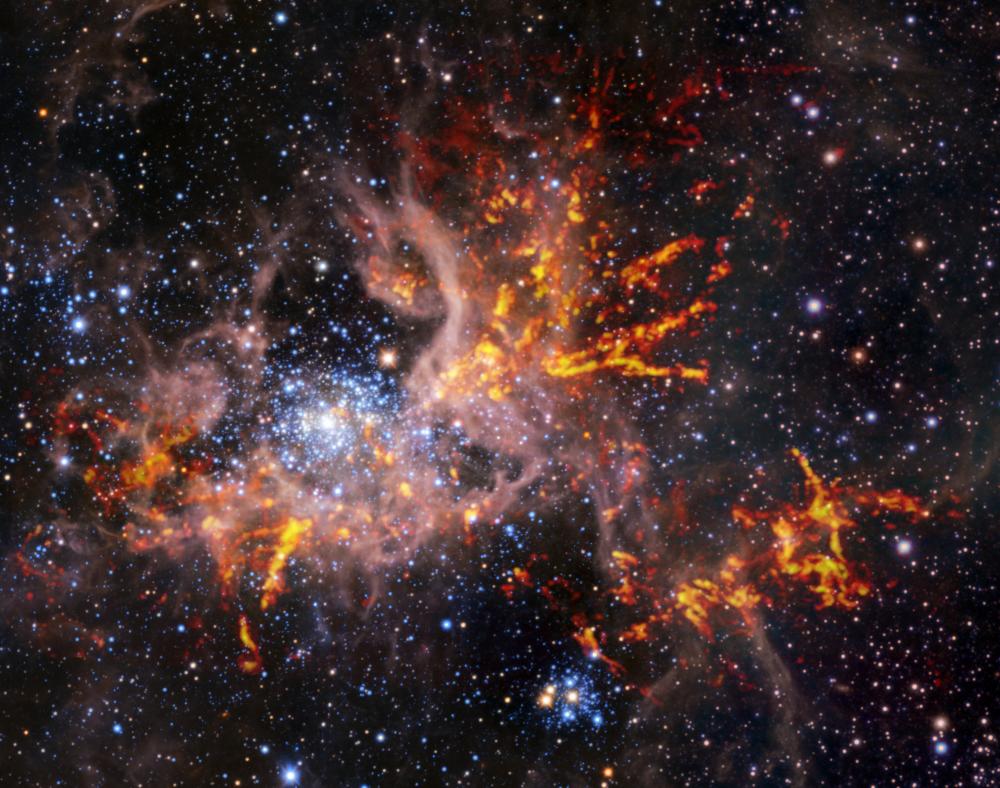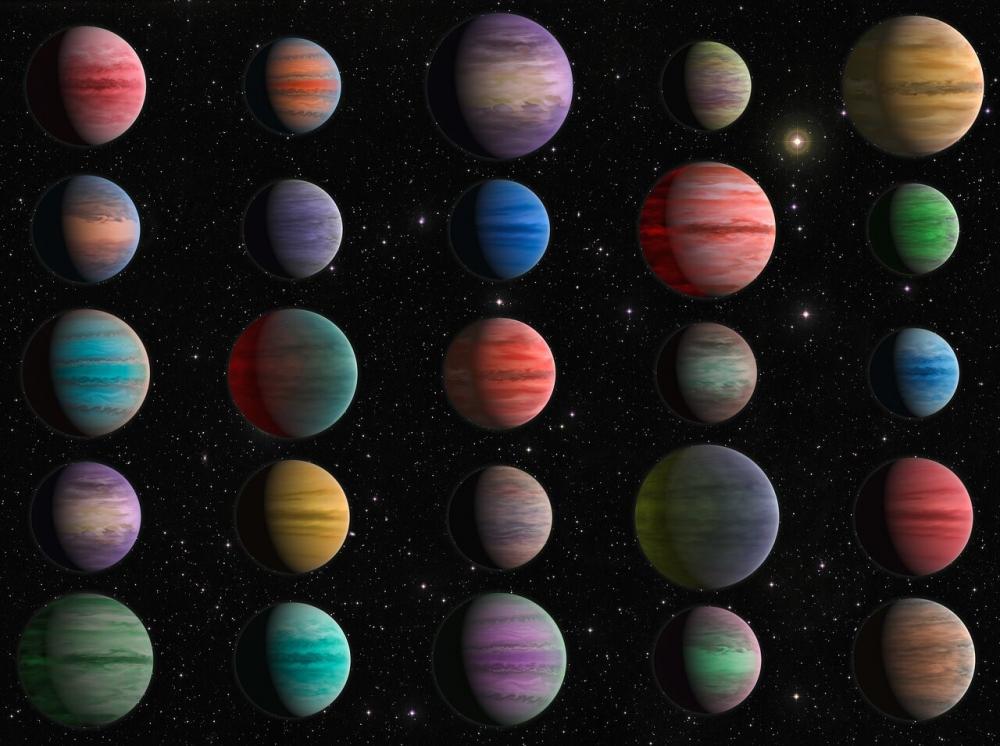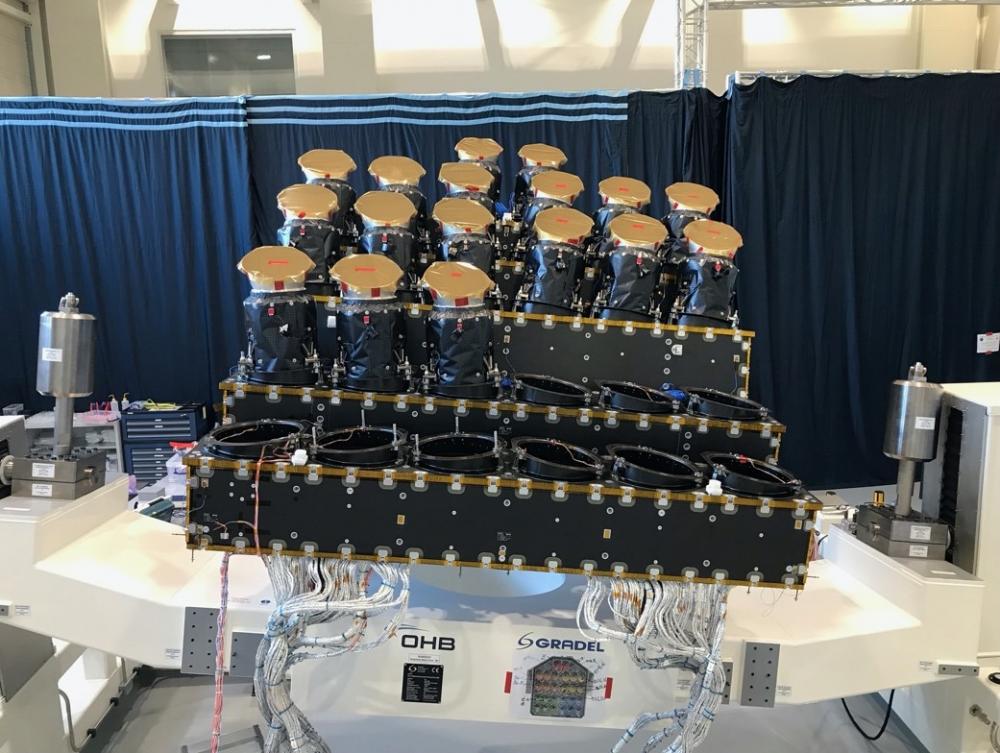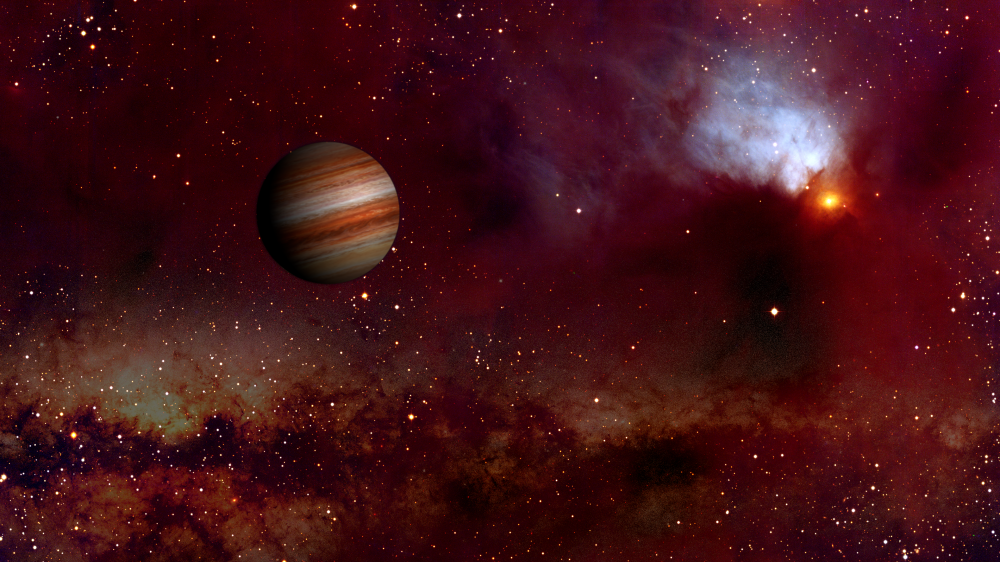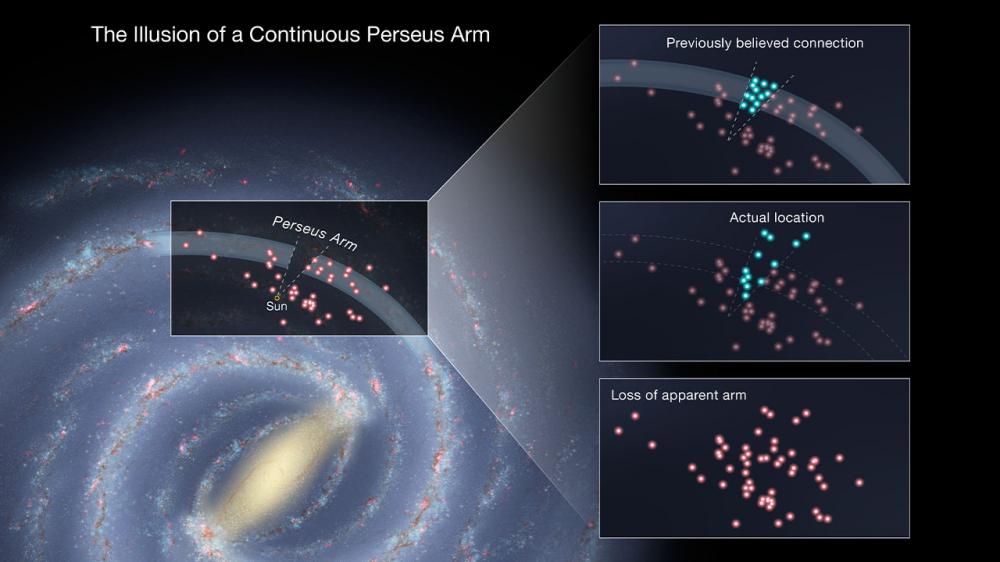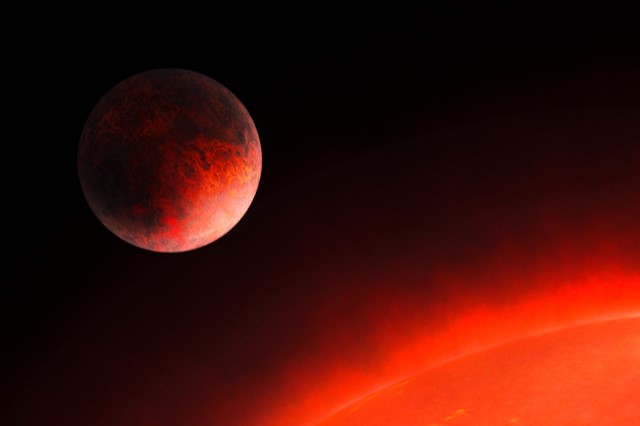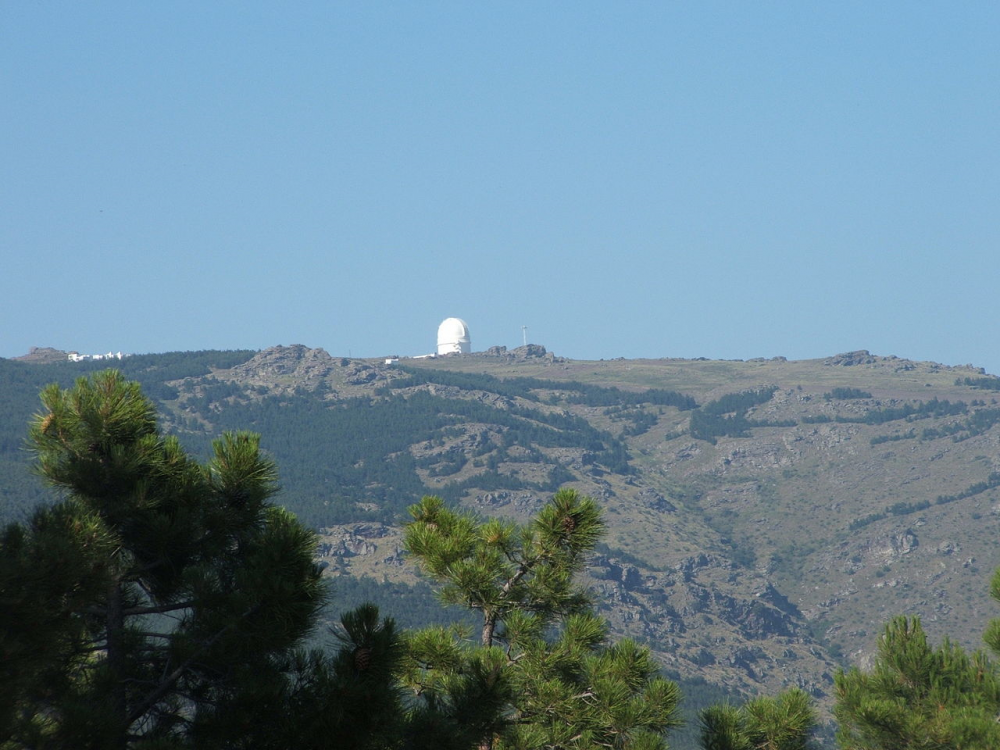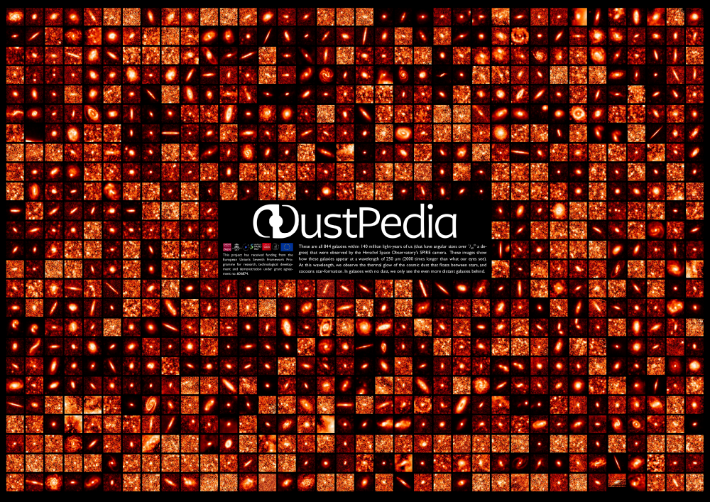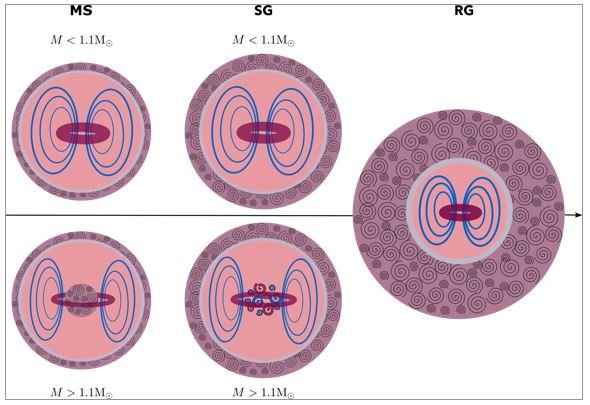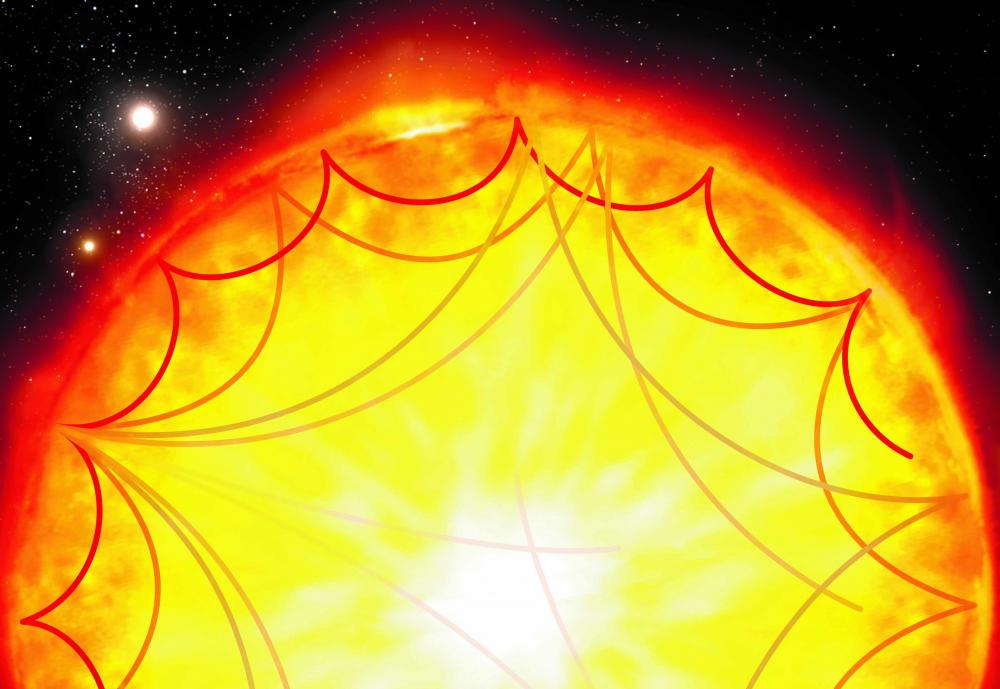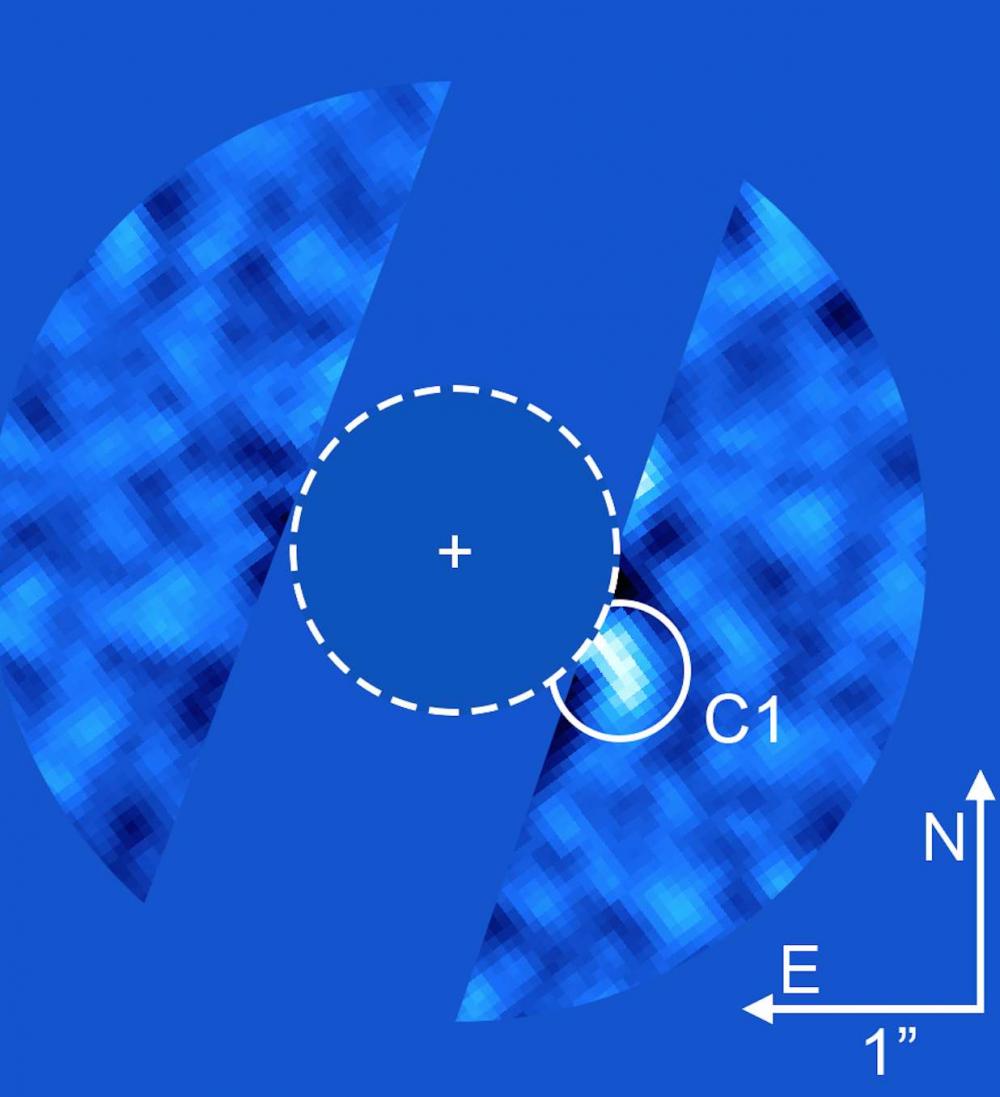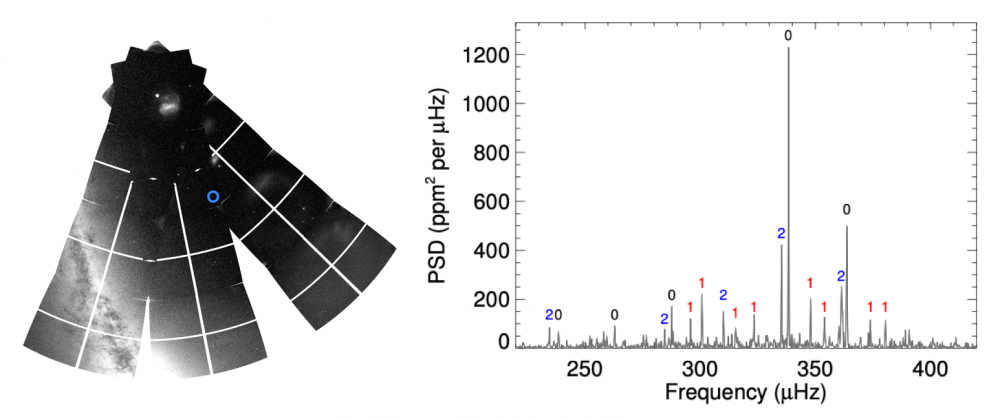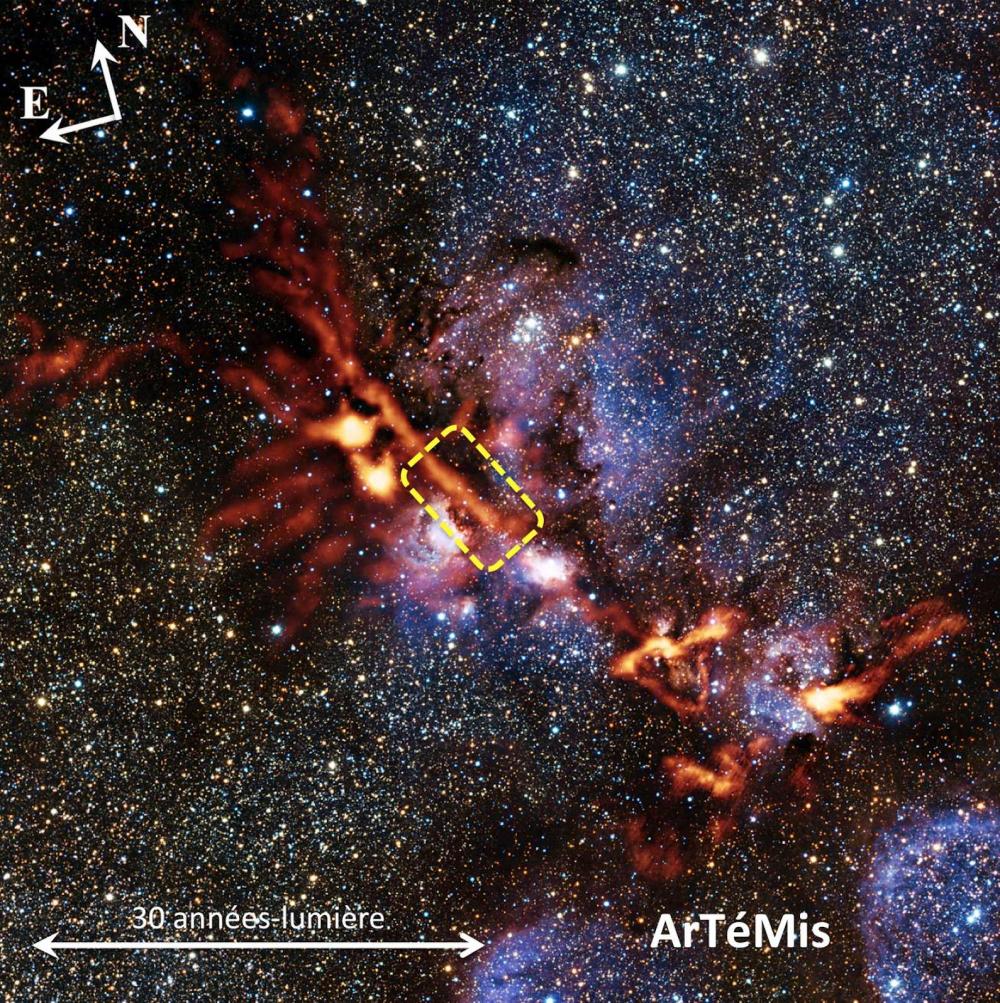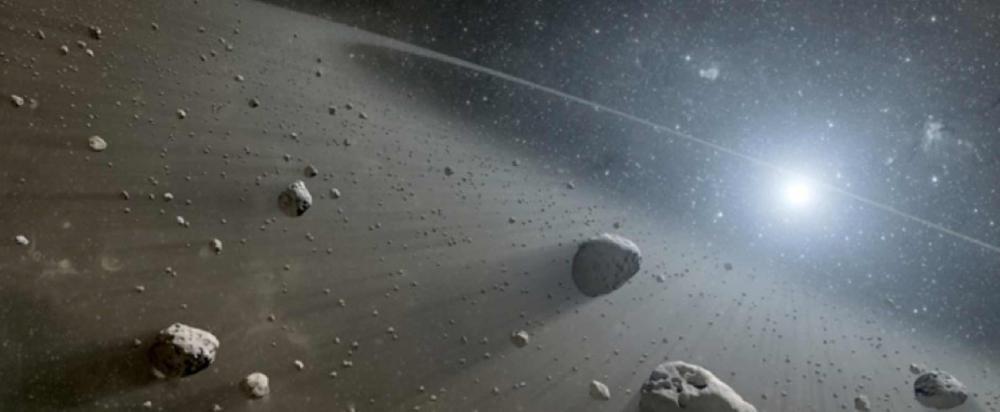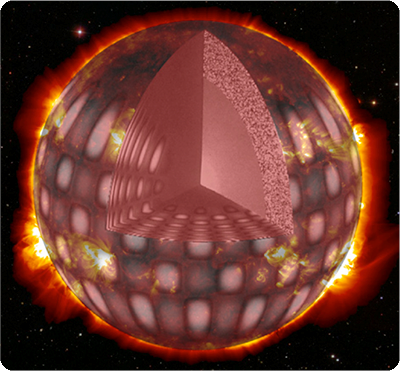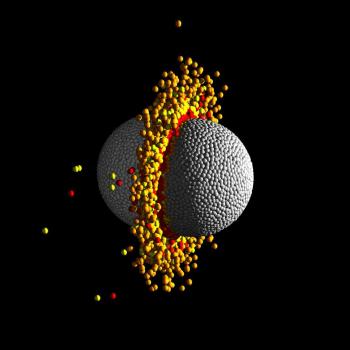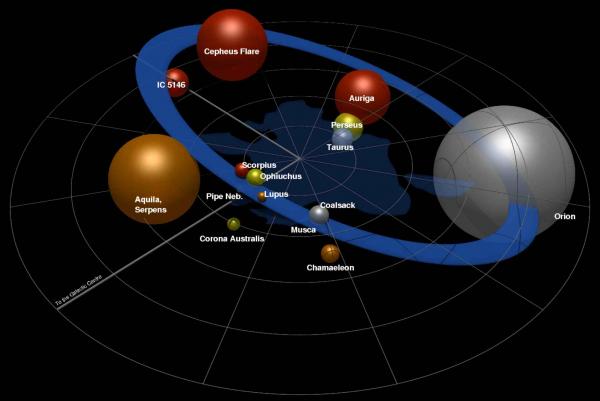A team of theorists from the CEA's Astrophysics Department (DAP), working within the Laboratory for Modeling Astrophysical Plasmas (LMPA), have carried out simulations using the CEA's supercomputers, with the aim of understanding the formation of stars and protoplanetary disks. Months of computational work have enabled us to achieve resolutions never achieved before, revealing new details about the formation of these objects.
The simulations yielded two major results: protostars are turbulent from birth, and protoplanetary disks form from material ejected from the star's surface.
These results have been published in Astronomy & Astrophysics: The birth and early evolution of a low-mass protostar and Formation of low-mass protostars and their circumstellar disks.
Although significantly more common in the Universe, ultra-cool dwarf stars remain poorly understood due to their low luminosity. Consequently, our understanding of their planetary population remains limited, even though they represent a substantial fraction of the planets in our Milky Way. It is in this context that the SPECULOOS program was developed, aiming to explore exoplanets around this type of star.
Thanks to this program, an international team of researchers, including the CEA, has just discovered a new planet: SPECULOOS-3 b. Earth-sized, it orbits the ultra-cool dwarf SPECULOOS-3, located 55 light-years away. This discovery marks the second planetary system identified around this type of star, following the famous TRAPPIST-1 system, also detected through this observation program.
The characteristics of SPECULOOS-3 b make it one of the most promising rocky exoplanets for detailed characterization through emission spectroscopy with the JWST's MIRI instrument. Its sensitivity is expected to provide significant constraints on the planet's atmospheric composition or surface mineralogy, if applicable.
This discovery was published in the journal Nature Astronomy.
An international team, including the Astrophysics Department of CEA-Saclay, led by the Instituto de Astrofísica e Ciências do Espaço (IA), utilized one of the world's most advanced spectrographs to detect the smallest "stellar tremors" ever recorded in an orange dwarf star, making it the smallest and coldest star observed to date with confirmed solar oscillations. This study demonstrates that asteroseismology is a powerful technique for studying such stars, opening new perspectives in our understanding of stellar physics and, by extension, exoplanets.
This study is published in the journal Astronomy & Astrophysics Letters: “Expanding the frontiers of cool-dwarf asteroseismology with ESPRESSO: Detection of solar-like oscillations in the K5 dwarf ε Indi”.
The James Webb Space Telescope has produced a new portrait of the atmosphere of exoplanet WASP-39b, a "hot Saturn" some 700 light-years away. After the first near-infrared observations in 2022, which revealed for the first time the presence of sulfur dioxide (SO2) in the atmosphere of an exoplanet, it was observed again in 2023, but this time in the far infrared, using the MIRI spectrometer. This new observation enabled the international research team, including Saclay's Astrophysics Department, to confirm the presence of this molecule in the atmosphere of WASP-39b and to constrain its abundance. This recent study demonstrates that photochemistry shapes the atmosphere of WASP-39b over a wide range of wavelengths.
To unravel this mystery, several teams with diverse skills from the Astrophysics Department had to come together, as the architecture that unites the star to its planet is highly complex. They had to combine a detailed understanding of stellar and planetary physics, exploring their interactions, with a thorough knowledge of the observations made by NASA's Kepler satellite to be able to decipher the data.
The study shows that the observed rarity seems to derive not from observational bias, but rather from physical causes. Tidal effects and magnetism are sufficient to explain qualitatively and quantitatively the migration of nearby planets around fast-rotating stars. Moreover, this migration appears to be dependent on the spectral type (fundamentally linked to mass) of the star. While these results are promising, it is nevertheless necessary to expand the sample size to better constrain scarcity and better understand the mechanisms at play. In particular, this study highlights the importance of considering the spectral type of stars (their masses) if we are to correctly model star-planet interactions.
This work is published in Astronomy & Astrophysics.
Antoine Strugarek, an astrophysicist in Irfu's Astrophysics Department, has been awarded an ERC Consolidator contract. The core of his ExoMagnets project is to understand the magnetic coupling between an exoplanet and its star, and therefore the magnetic field of exoplanets, which is crucial for the habitability of a planet.
The aim of the ExoMagnets project is to develop new theories and high-performance simulations using future exa-scale computing infrastructures in order to exploit existing and future observations of the magnetism of distant exoplanets.
The consortium of laboratories that has developed the MIRI instrument for the JWST is benefiting from guaranteed observation time. The CEA's Astrophysics Department, which is part of the consortium, has defined and coordinated the exoplanet observation programme. Among the objects selected are a number of brown dwarfs, which are excellent proxies for studying giant exoplanets, particularly those that orbit far from their star, much further away than the planets in our solar system. The physical and chemical processes that govern brown dwarfs are very similar. The first results concerning the cold brown dwarf W1828 have just been published in the journal Nature. By pointing the James Webb Space Telescope (JWST) at this object, a team of researchers including DAp-AIM researchers were able to use the MIRI instrument to measure, for the first time, the isotopologues of ammonia in the atmosphere of a cold brown dwarf, paving the way for a better understanding of the formation of exoplanets.
These results have been published in the journal Nature.
For the 17th edition of the Prix Jeunes Talents France, the L'Oréal Foundation rewarded 35 brilliant young female researchers in France, selected from 618 eligible applications by a jury of excellence comprising 32 researchers from the French Academy of Sciences. At Irfu's Astrophysics Department, Achrène Dyrek received the award for physics.
Achrène Dyrek has just obtained her PhD in astrophysics. She began her thesis in 2020 at CEA's Department of Astrophysics (DAp), under the supervision of Pierre-Olivier Lagage. During this time, she dedicated herself to the study of planetary atmospheres as seen by the James Webb Space Telescope (JWST - NASA/ESA/CSA), using the MIRI (Mid-InfraRed Instrument) developed at DAp.
Using the James Webb Space Telescope, a group of astronomers led by MPIA, in collaboration with a team from the Astrophysics Department of CEA Paris-Saclay, searched for an atmosphere on the rocky exoplanet TRAPPIST-1 c. Although the planet is almost identical to Venus in terms of size and mass, its atmosphere turned out to be very different. By analyzing the heat emitted by the planet, they concluded that it may have only a tenuous atmosphere containing a minimum of carbon dioxide. However, this is also consistent with a barren rocky planet devoid of any significant atmosphere. This work gives us a better understanding of how the atmospheres of rocky planets orbiting low-mass stars can withstand strong stellar winds and intense UV radiation.
The results are presented in the journal Nature:
Discovered in 2009, exoplanet GJ1214b orbits a small star just 40 light-years away. With a mass around six times that of Earth and an atmosphere made up of hydrogen and helium, it is considered a "mini-Neptune".
A team from NASA, in collaboration with researchers from CEA Paris-Saclay, pointed the JWST at the planet using the MIRI instrument, built by CEA Paris-Saclay, for some 40 hours. This unprecedented observation made it possible to obtain, for the first time, the phase curve of an exoplanet with MIRI, i.e. complete tracking of the planet's rotation around its star.
By following the evolution of the exoplanet-star system's emission, the research team was able to determine the planet's temperature to within 9°: 280°C on the dayside and 164°C on the night side. Comparing the observations with atmospheric models, the researchers deduce that: 1. the small temperature difference between the two sides, despite the planet's synchronous rotation, means that there is a good exchange of energy between the sides, due to a dense atmosphere. 2. The relatively low temperature on the dayside, given the planet's proximity to its star, indicates that a layer of aerosols in the exoplanet’s upper atmosphere reflects much of the stellar radiation. The type of aerosol with such a property has yet to be determined. 3. The atmosphere contains many elements heavier than hydrogen and helium, probably abundant water.
The results are published in the prestigious journal Nature
The European Research Council has just announced the names of the winners of the Advanced Grant. This 2023 edition rewards in particular two researchers from the CEA's fundamental research department for their work in the fields of astrophysics and neuroscience. Anaëlle Maury is the leader of the PEBBLES project. This project consists of developing an innovative methodology to characterise the properties of dust around very young stars in the process of forming their proto-planetary disks. Dust is one of the key elements in the physical processes regulating the formation of stars and their planetary systems, but recent observations are overturning the models used until now to describe its evolution from submicron grains to pebbles. Observing and modelling the properties of dust grains during the earliest phases of disk formation promises to provide important insights into the conditions leading to the formation of solar systems such as our own. Through PEBBLES, the teams will use new dust models that are better suited to denser astrophysical environments and will use them in comparison with observations from space missions and ground-based observatories from the infrared to the millimetre range.
An international team of researchers has used NASA's James Webb Space Telescope to measure the temperature of the rocky exoplanet TRAPPIST-1 b. This is the world's first detection of thermal emission from a rocky exoplanet as small and “cool” as the rocky planets in our own solar system. TRAPPIST-1 b receives about twice the amount of energy as Venus receives from the Sun and four times more than Earth. The result indicates that the dayside of the planet has a temperature of about 227°C (500 K) and suggests that it has no significant atmosphere. The study, co-authored by three researchers from the Dap, has just been published in the journal Nature, on Monday 27 March.
Magnetars are neutron stars known for their wide variety of electromagnetic emissions coming from the dissipation of their extreme magnetic fields, which are the strongest known in the Universe and can reach 1015 Gauss, or 10 billion times that of the strongest magnet created by humans.
How could these magnetic fields have been formed? This is one of the open questions that a Franco-German team led by the supernovae team of the Department of Astrophysics (DAp) of CEA Paris-Saclay, has recently tried to answer by proposing a numerical modeling of a new scenario of formation of magnetars in a study published in the scientific journal "Astronomy and Astrophysics".
This scenario suggests that the matter falling on the neutron star a few seconds after its formation can trigger a dynamo effect called Tayler-Spruit which would amplify its magnetic field, and this independently of its initial rotation speed. The simulations of this scenario reproduces the measured intensity of magnetar magnetic fields. Therefore, this study represents another step towards the understanding these atypical objects.
A team from the Département d'Astrophysique, in collaboration with the start-up Iris.AI, has shown that one could find, in select biology studies, some relevant information to better understand the interstellar medium. These results will soon appear in the Journal of Interdisciplinary Methodologies and Issues in Science.
The four principal investigators receive almost 10 million euros for their project 4D-STAR, which will develop and deliver innovative numerical models of rotating magnetic stars in three spatial dimensions throughout their evolution.
ERC Synergy Grants of the EU's research and innovation programme Horizon Europe, help groups of two to four outstanding researchers bringing together complementary skills, knowledge and resources in one ambitious overarching project, addressing some of the world’s most formidable research problems. The projects typically span multiple scientific disciplines - in the case of 4D-STAR astronomy, theoretical physics, fluid mechanics, applied mathematics, computer science and software development.
The LISA (Laser Interferometer Space Antenna) space mission by ESA and NASA, will observe gravitational waves from space. After its launch around 2035, LISA will observe in the low frequency band of the gravitational waves spectra and will capture the signal coming from sources which are not detected yet in the high frequency band of ground-based detectors such like Virgo, LIGO, KAGRA, or GEO600. Among the new sources of gravitational waves, the most represented are the galactic binaries whose number of detections should amount several tens of thousands. The galactic binaries are double systems made of compact stars such like neutron stars or white dwarfs in different combinations. Within the low frequency band, galactic binaries are detected during inspiral, that is to say several thousand years before fusion which is detected by ground-based detectors. Therefore, the signature of effects due to structure or internal dynamics of compact stars on the gravitational waves can potentially be detected over the lifetime of the space mission. LISA will allow to understand the state of matter inside compact objects within binary systems, their deformability, or their magnetic fields through the secular evolution of the orbits. In a recent study published in Physical Review D (DOI: https://doi.org/10.1103/PhysRevD.105.124042), a team from SYRTE in Observatoire de Paris and LDE3 from DAP/IRFU at CEA, demonstrated that the effect of magnetism within galactic binary could be measured by LISA.
As part of the Solar Orbiter science support activities and in conjunction with the ERC Synergy WholeSun grant, researchers from CEA Paris-Saclay, together with an international collaboration, have developed advanced numerical simulations to study the formation of structures of the solar wind. These simulations allow studying the interaction of the convection at the solar surface with the magnetic field. They reveal the appearance of twisted magnetic structures that can participate in the creation of switchbacks.
Understanding the star formation process is a major open question in contemporary astrophysics. It is indeed the process that controls the evolution of galaxies since their birth, gradually transforming their interstellar gas into stars and enriching it with heavy elements and dust grains. It is also the formation of stars that is at the origin of the formation of planetary systems and the appearance of life. This process is however complex and still very poorly understood. It involves the understanding of a series of hydrodynamic instabilities leading to the collapse of a molecular cloud, in which gravity, magnetic field and chemistry play a central role. Moreover, the feedback, i.e. the ionizing radiation and the wind from newly formed massive stars, has the effect of destroying the rest of the molecular cloud and thus inhibiting star formation after a few million years. This feedback is a key element, but it is still insufficiently understood.
On the evening of the 28th, we could read on NASA's blog: "It's official, the alignment of NASA's James Webb Space Telescope is now complete"!
To say that all the instruments of the James Webb Space Telescope are perfectly aligned, means that the primary mirror is well adjusted. The images are already breathtaking while the adjustment phase of all the elements of the telescope is not finished yet.
For this test, the Webb telescope pointed at a star and the quality of the alignment was verified with a part of the Large Magellanic Cloud providing a dense field of hundreds of thousands of stars on all instrument sensors. Webb's three imaging instruments are NIRCam (images below at 2 microns wavelength), NIRISS (image at 1.5 microns) and MIRI (image at 7.7 microns). MIRI detects light in a lower energy range (or longer wavelength) than the other instruments, revealing the emission from interstellar clouds as well as starlight.
These images are used to assess image sharpness, but also to accurately measure and calibrate subtle image distortions and alignments between the instrument's sensors as part of the overall Webb instrument calibration process.
Archival observations of 25 hot Jupiters by the NASA/ESA Hubble Space Telescope have been analysed by an international team of astronomers, enabling them to answer five open questions important to our understanding of exoplanet atmospheres. Amongst other findings, the team found that the presence of metal oxides and hydrides in the hottest exoplanet atmospheres was clearly correlated with the atmospheres' being thermally inverted.
Read the science release : Hubble observations used to answer key exoplanet questions | ESA/Hubble (esahubble.org)
The Solar Orbiter mission, launched on February 10, 2020 from Cape Canaveral has already traveled more than 2 billion km. Since its passage just 470 km above the Earth in November 2021, the science mission has officially begun. On March 26, 2022, Solar Orbiter passed within 0.32 astronomical units of our star (about 1/3 the distance from Earth to the Sun) for its fourth perihelion (the point in its orbit where Solar Orbiter is closest to the Sun) at a speed of 198,000 km/h. On this occasion, all 10 instruments onboard will be jointly switched on and pointing towards our star. As the cycle 25 of magnetic activity of the Sun is in full rise of intensity, it is highly probable that many eruptive events will be observed with the STIX telescope (Spectrometer Telescope for Imaging X-rays) whose detectors, the Caliste-SO, were conceived, realized and qualified at CEA.
On the occasion of this 4th perihelion, this milestone delivers one of the first X-ray images from STIX as well as new simulations of the Solar model from a DAp team, which have given rise to recent articles (see end of page)
ESA's PLATO mission has been given the green light to continue its development after a successful critical review on January 11, 2022.
PLATO, or PLANetary Transits and Oscillations of stars, is the third medium-class mission in ESA's Cosmic Vision program. Its objective is to find and study a large number of planetary systems, with a focus on the properties of Earth-like planets in the habitable zone around solar-type stars. PLATO has also been designed to study stellar oscillations through asteroseismology, which will allow precise measurement of the parameters of the planets' host stars, including their age.
The review verified the maturity of the entire space segment (the service module and the payload module), confirming the robustness of the satellite-payload interfaces and the payload development schedule. Particular emphasis was placed on the serial production of the 26 cameras, and the robustness of the development schedule for both modules. PLATO will use the 26 cameras to discover and characterize exoplanets orbiting stars similar to our Sun.
Rogue planets are elusive cosmic objects that have masses comparable to the largest planets in our Solar System but do not orbit a star, instead roaming freely on their own. Not many were known until now, but a team of astronomers, using data from facilities across the world, have just discovered at least 70 new rogue planets in our galaxy just a few hundred light-years away in the Scorpion sky region. This is the largest group of rogue planets ever discovered, an important step towards understanding the origins and features of these mysterious galactic nomads.
The Milky Way is a spiral galaxy. If we could travel out of it we would probably observe a flat disk with spiral arms connected to its central core. Stuck inside the Milky Way, with no bird's eye view and limited precise distance measurement to interstellar clouds, the exact shape of the Galaxy spiral pattern is difficult to assess and remains not well known.
For decades the astronomers have used several methods to infer the Milky Way large scale structure, and observations have led us to believe that it is likely to be a Grand Design spiral with long, thin and well defined arms like Messier 81. But a recent study of a team including a member of the IRFU Astrophysics Departement is challenging this vision.
These new results are showing that a section of one of the most well know spiral structure of the Milky Way, the Perseus arm, is not as regular and organised as it was thought. Based on the cross-analysis of several observational databases, this study provides precise measurements of the distance to 81 interstellar clouds in a specific section of the putative Perseus arm. By locating interstellar matter in three dimension, the authors reveal a much more perturbed and scattered structure, indicating that the continuous Perseus arm structure previously infered from observations might have been the result of a projection effect, an illusion predicted by W. Burton in 1971.
In the world of extrasolar planets, "GJ 367 b" is a featherweight. With half the mass of Earth, the newly discovered planet is one of the lightest of the nearly 5,000 exoplanets known today. It takes about eight hours for the extrasolar planet to orbit its host star. With a diameter of just over 9,000 kilometers, GJ 367 b is slightly larger than Mars but smaller than Earth. This planetary system is located just under 31 light years from our planet and is therefore ideal for further studies of its properties. His discovery demonstrates that it is possible to accurately determine the characteristics of the smallest and lighter exoplanets. Such studies provide new clues to better understand how planets form and evolve.
An international group of 78 researchers from 49 institutions including the Department of Astrophysics (DAp) at CEA / Irfu published this study in the scientific journal Science based on initial observations from the NASA / MIT Transiting Exoplanet Survey Satellite (TESS).
"With an orbital period of only one third of a terrestrial day, the year on GJ 367 b is therefore much shorter than the day on Earth, while the star spins on itself in 48 days, which makes around 1.7 times slower than our Sun ”says Rafael A. García, CEA researcher who is part of the team.
The DAp focused its effort in the characterization of the host-star with TESS as well as using WASP data which allowed us to determine with high precision the rotation period of the star (48 days).
Planets that are strongly irradiated by their host stars develop extended atmospheres that can be probed during transits. These atmospheres undergo photoevaporation which can lead to significant changes in the mass and composition of the planets if it continues for several gigayears. These planets are therefore valuable for understanding planetary evolution. The study of the photoevaporation of exoplanets could inform us on the evolution of the atmospheres of the planets of our Solar System whose first atmospheres would have been shaped by this phenomenon. Exoplanets allow us to study this process as it occurs. An international collaboration has studied the HAT-P-32 system (composed of the star of the same name and an exoplanet named HAT-P-32b) by studying two absorption lines: hydrogen and helium. This allowed them to identify remarkable differences between the two lines during the transit, to the surprise of scientists who also thought that hot Jupiters were rather stable to photoevaporation. Although this statement on the long-term stability of hot Jupiters’ atmospheres remains generally true, HAT-P-32b is an exception to this rule and shows that our understanding of planetary evolution remains incomplete!
An international team led by several researchers from LFEMI/DAp/CEA has just published a study shedding light on the formation mechanisms of interstellar grains in galaxies. This is one of the key results of the European DustPedia collaboration, which brings together some thirty people from six laboratories: the DAp at CEA-Saclay, the IAS at Orsay, the University of Ghent, the University of Cardiff, the Observatory of Florence and the Observatory of Athens.
An international collaboration led by a team from the Astrophysics Department/AIM Laboratory of IRFU has predicted and characterised the expected signature of internal magnetic fields in stars through their seismology - called asteroseismology. This study demonstrates that thanks to the very precise data from the Kepler (NASA), TESS (NASA) and soon PLATO (ESA) satellites, we are potentially able to detect magnetic fields in the cores of red giant stars (which are the descendants of low-mass stars such as our Sun and intermediate masses below ~8 solar masses). The results are published in two papers in the journal Astronomy & Astrophysics.
An international team including researchers from the Astrophysics Department (DAp) of CEA/Irfu, working in particular at the laboratory for the Dynamics of Stars, (Exo) planets and their Environment (LDE3), has been able to demonstrate that stars rotate faster than expected as they get older. Using asteroseismological techniques - the study of stars through the characterization of their oscillation modes by seismic methods - researchers were able to analyze for the first time a complete sample of 91 stars brooding ages 1 to 13 billion years. These data confirm that the oldest stars slow down their rotation less effectively. This discovery sheds new light on the evolution of star rotation and should make it possible to more accurately calculate the age of stars. These results are published in the journal Nature Astronomy on April 22, 2021.
The 2021 MERAC Prize for the Best Early Career Researcher in Theoretical Astrophysics is awarded to Dr Antoine Strugarek (CEA Saclay, France) for ground- breaking contributions in stellar astrophysics, including dynamo theory, predictions of solar flares and pioneering work on star-exoplanet interactions. The prize from the MERAC foundation (Mobilization for European Research in Astrophysics and Cosmology) is awarded each year by the European Society of Astronomy (ESA).
Imaging planets that could potentially sustain life around nearby stars has become a possibility thanks to advances reported by an international team of astronomers in the journal Nature Communications. Using a newly developed system for mid-infrared exoplanet imaging in combination with a very long observation time, they achieved the capability of directly imaging planets about three times the size of Earth within the habitable zones of nearby stars. This experiment, called NEAR (Near Earths in the AlphaCen Region), was performed using VISIR, a mid-infrared instrument built by the Astrophysical Department of CEA-IRFU. The VISIR camera has been adapted to a 8m large telescope VLT UT4 (Yepun) in Chile, with a specific star-light blocking device and a a built-in adaptive optics sytems to correct for the atmospheric turbulence. A potential Neptune-to Saturn-sized planet orbiting Alpha Centauri may have been pinpointed but still requires further confirmation.
See the video : Breakthrough Watch/NEAR
ESA has adopted Ariel (Atmospheric Remote-sensing Infrared Exoplanet Large-survey), the 4th medium-class space mission of its Cosmic Vision program. Ariel is expected to be launched in 2029 by Ariane 6 from the Guiana Space Centre in Kourou. The French team, composed of CNES, CEA and CNRS, has taken charge of the design, production and delivery of the AIRS spectrometer. Pierre Olivier Lagage, astrophysicist at Irfu, is one of the 2 co-PI for the ARIEL consortium; the other co-PI is Jean-Philippe Beaulieu from IAP.
ν Indi is a bright star (visual magnitude mv = 5.3) visible with the naked-eye from the southern hemisphere. By using ground data (ESO telescopes), space data (Gaia and Tess missions) and by combining very diverse spectroscopic, astrometric, kinematic or asteroseismological information, an international team including two researchers from the Department of Astrophysics / AIM Laboratory of CEA-Saclay was able to determine the epoch, between 11.6 and 13.2 billion years ago, of a collision between our galaxy and a small dwarf galaxy, Gaia-Enceladus. This work is published in the journal Nature Astronomy, January 2020.
An international team led by the Astrophysics Department-AIM Laboratory of CEA-Irfu has just obtained new clues about the origin of star mass distribution, combining observational data from the large interferometer ALMA and the APEX radio telescope operated by the European Austral Observatory (ESO) and the Herschel Space Observatory. Thanks to ALMA, the researchers have discovered in the so-called Cat's Paw Nebula, located at about 5,500 light-years, the presence of protostellar dense cores much more massive than those observed in the solar vicinity. Researchers have shown that there is a close link between the mass distribution of interstellar filaments and the mass distribution of stars. The density - or mass per unit length - of the parent filaments is the crucial parameter that controls the masses of newly-formed stars. This discovery provides a key clue to the origin of stellar masses. These results are published in three articles of the journal Astronomy & Astrophysics.
An international team led by researchers from the CEA Paris-Saclay Astrophysics Department (DAp) have probed for the first time the dust envelopes surrounding stars in formation (so-called Class 0 protostars) thanks to the large interferometer NOEMA (former Plateau de Bure, France). Surpisingly, the researchers discovered the presence of large grains whose size grows as one gets closer to the central star. The presence of such large grains, already forms a few 10000 years after the beginning of the initial gas collapse is extremely unexpected. These grains are the building blocks from which planets will be formed. These results could thus call for a major revision of the timeline and timescales to form planets. These conclusions are published in Astronomy & Astrophysics.
Lisa Bugnet is one of 35 young women researchers who won the L'Oréal-Unesco Fellowships for Women in Science in 2019. As an asteroseismologist at the Dynamic Laboratory of Stars, (Exo)planets and their Environment of the DAP/Irfu, she uses seismic waves emitted by stars to probe their heart and understand their evolution from birth to the end of their life.
An international collaboration, involving the Astrophysics Department-Laboratory AIM of CEA irfu, participated in the study of an exoplanetary system, Kepler-107 and revealed an amazing distribution of its 4 planets of which two seem potentially resulting from a giant impact. Thanks to asteroseismology (the study of star vibrations) and the modeling of planetary transits, researchers have been able to determine the mass and radius of the central star and its planets with great precision. and highlighted the unusual density of one of the planets. This anomaly can be explained by a giant collision between planets, probably similar to the one that affected the Earth in the past to form the Moon. These results are published in the journal Nature Astronomy of Februrary 4th, 2019.
At the World SuperComputing'17 Congress in Denver (United States), which brings together more than 10,000 HPC experts, CEA researchers, members of an international team, received the "2017 HPCWire Publishers Award" for outstanding results based on high-performance computing that unlock the secrets of star magnetic cycles (HPCWire Editors Choice Awards 2017, Top HPC-enabled Scientific Achievement). HPCWire is the world leader in new sources of information in the field of supercomputing.
Based on observations of nearby molecular clouds with the Herschel space observatory, recently large samples of future stars were detected in the form of dense cores. The properties of these compact seeds and their connection with interstellar filaments reveal us the earliest key stages of stars and the way of low-mass star formation.
Among several cloud complexes along the Gould Belt (see image below) the Aquila and Taurus regions were targeted. While the star formation in Aquila was relatively unexplored until recently, the Taurus cloud with its main filaments is well known. The Aquila Rift lies above the Galactic plane at the distance of about 260 parsec (approximately 850 light-years from the Sun). The Taurus region is more nearby, it seems to sit in the wall of the Local Bubble - a cavity, surrounding the Solar System- at 140 parsec (or 450 light-years) from us.
One year on from the launch of the Herschel European satellite, the European Space Agency (ESA) is carrying out an initial scientific assessment of the mission, starting with the first symposium of Herschel scientific results, held from 4th to 7th May on the ESTEC site in Noordwijk (Netherlands).
The scientific community has been analyzing the initial data received since Herschel was declared 'science-ready' in September 2009. More than 400 scientists gathered at ESTEC to present their initial results, which have lived up to everyone's expectations. These results are due for publication in a special issue of Astronomy & Astrophysics in the autumn of 2010, and are mentioned in a CNRS-CEA press release.
The French community is deeply involved in the Herschel project, accounting for 25% of the participants, including several teams from the Astrophysics Department of the CEA-IRFU-AIM Laboratory.
The high resolution images provided by the Cassini spacecraft have uncovered a surprising shape for two small Saturn satellites located inside the rings of the giant planet. An international team, leaded by Sébastien Charnoz and André Brahic from the Service d'Astrophysique (SAp) of CEA/DSM/DAPNIA and laboratoire AIM (CNRS, Université Paris Diderot), have just shown that the Pan and Atlas satellites, two small moons with only a 30 km radius, are circled at their equator by an important padding making them looking like "flying saucers". Thanks to numerical simulations able to reproduce the collisions among particles taking place inside the Saturn rings, the astronomers have now gain new indications that the small bodies have indeed "grown" inside the rings. They constitute a new evidence that the Saturn rings originate from the cataclysmic desintegration of a bigger satellite or comet.
These results are published in Science of 7 décembre 2007.
For details and more information in French : click HERE
